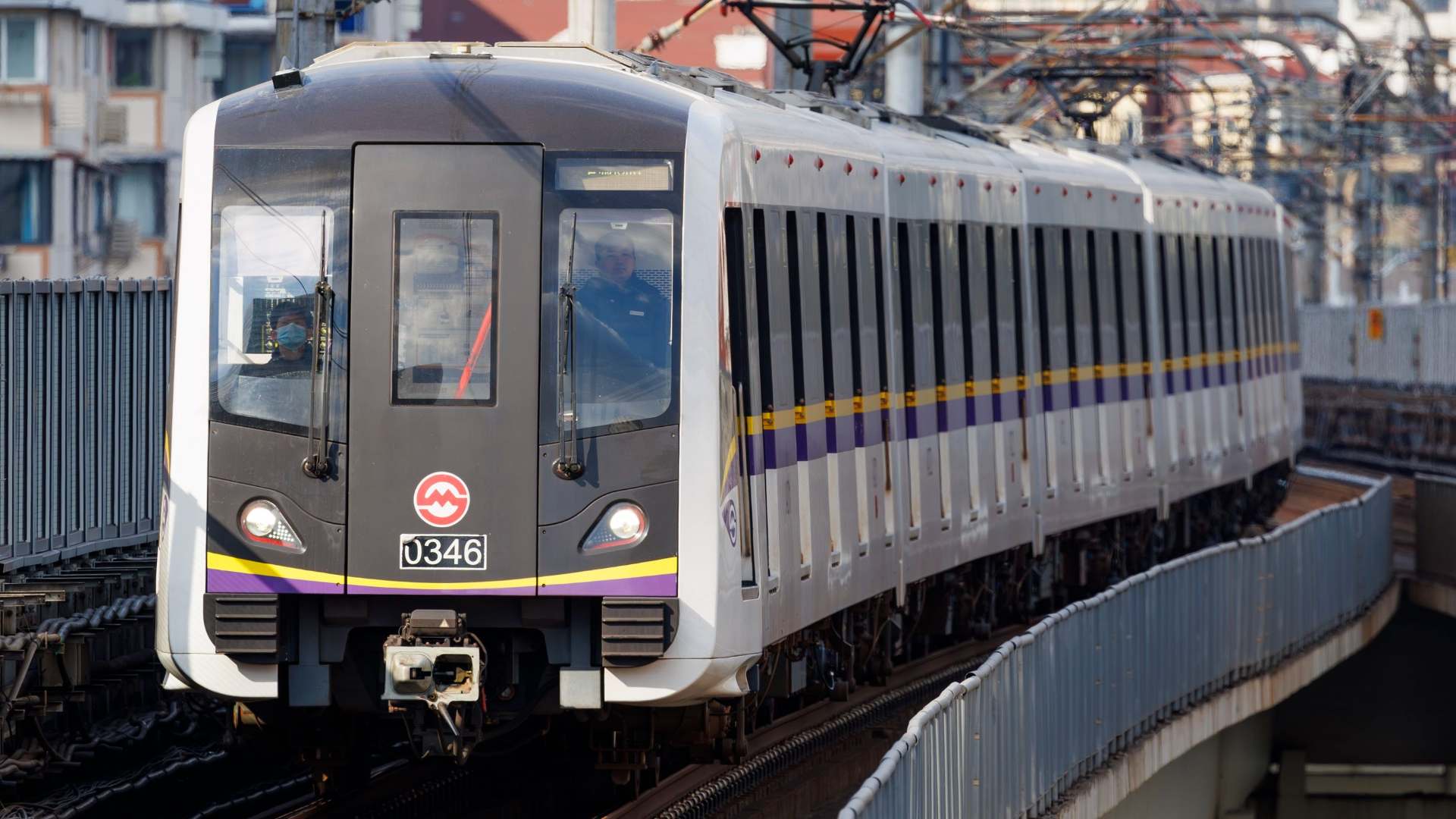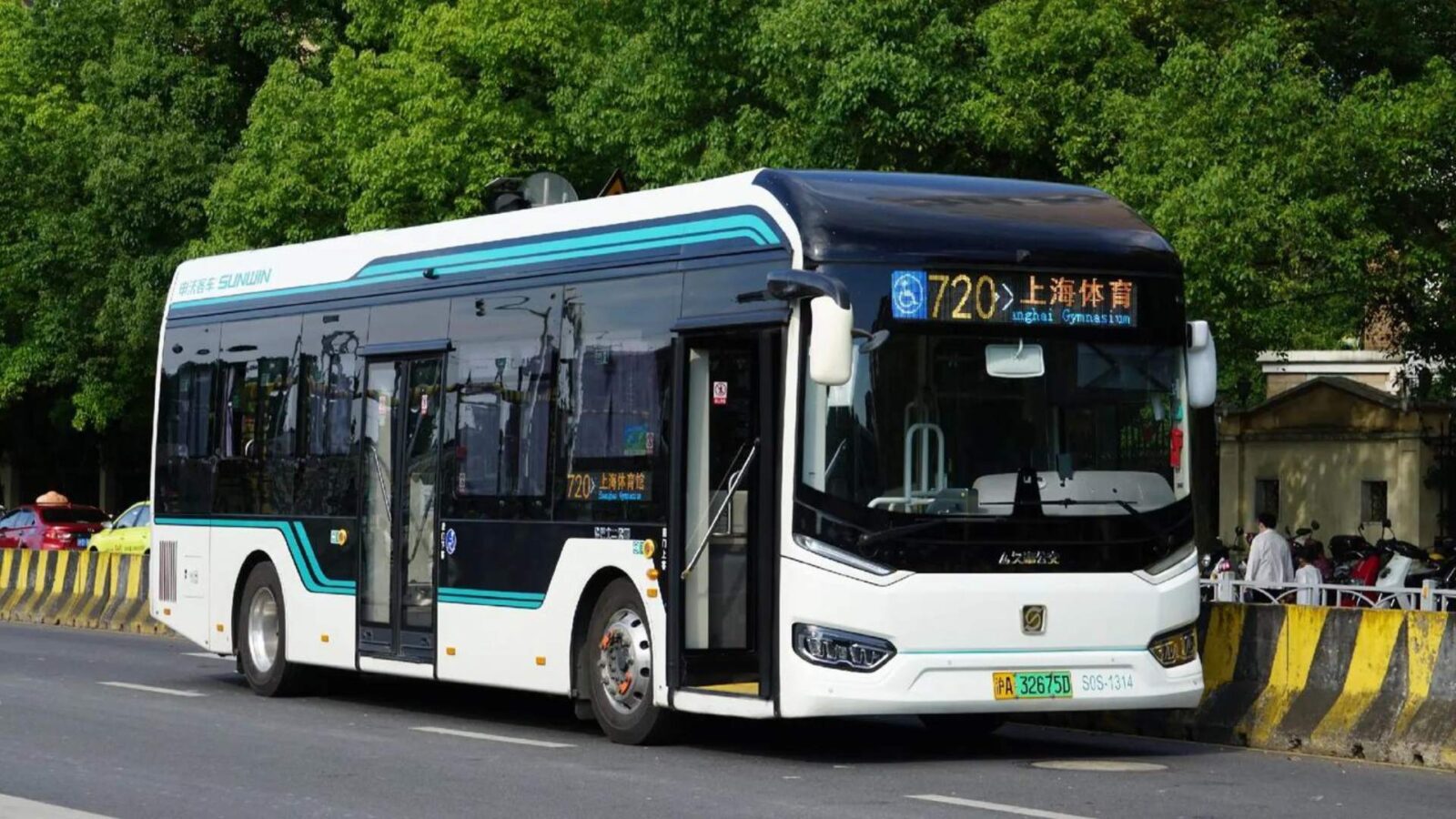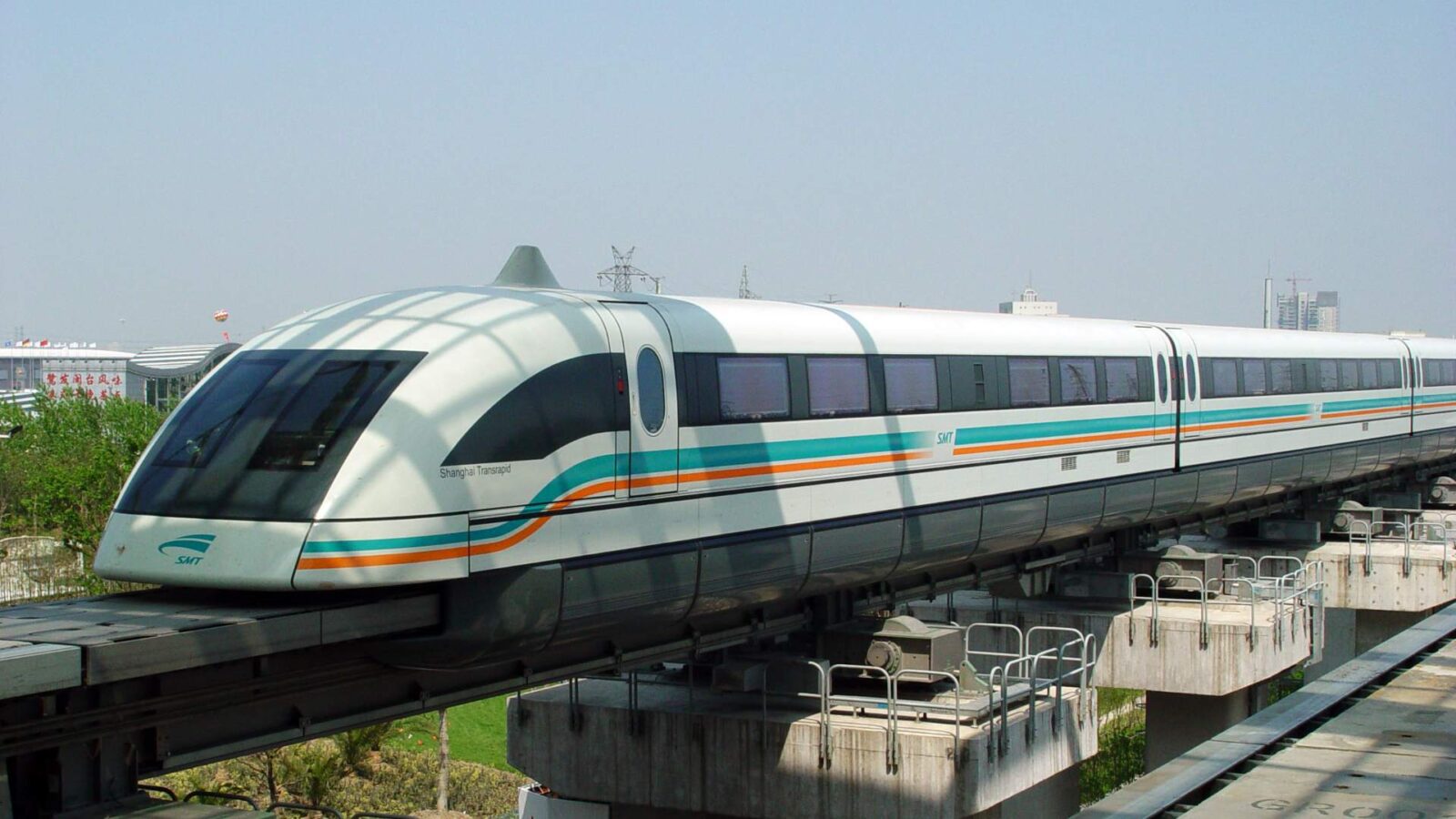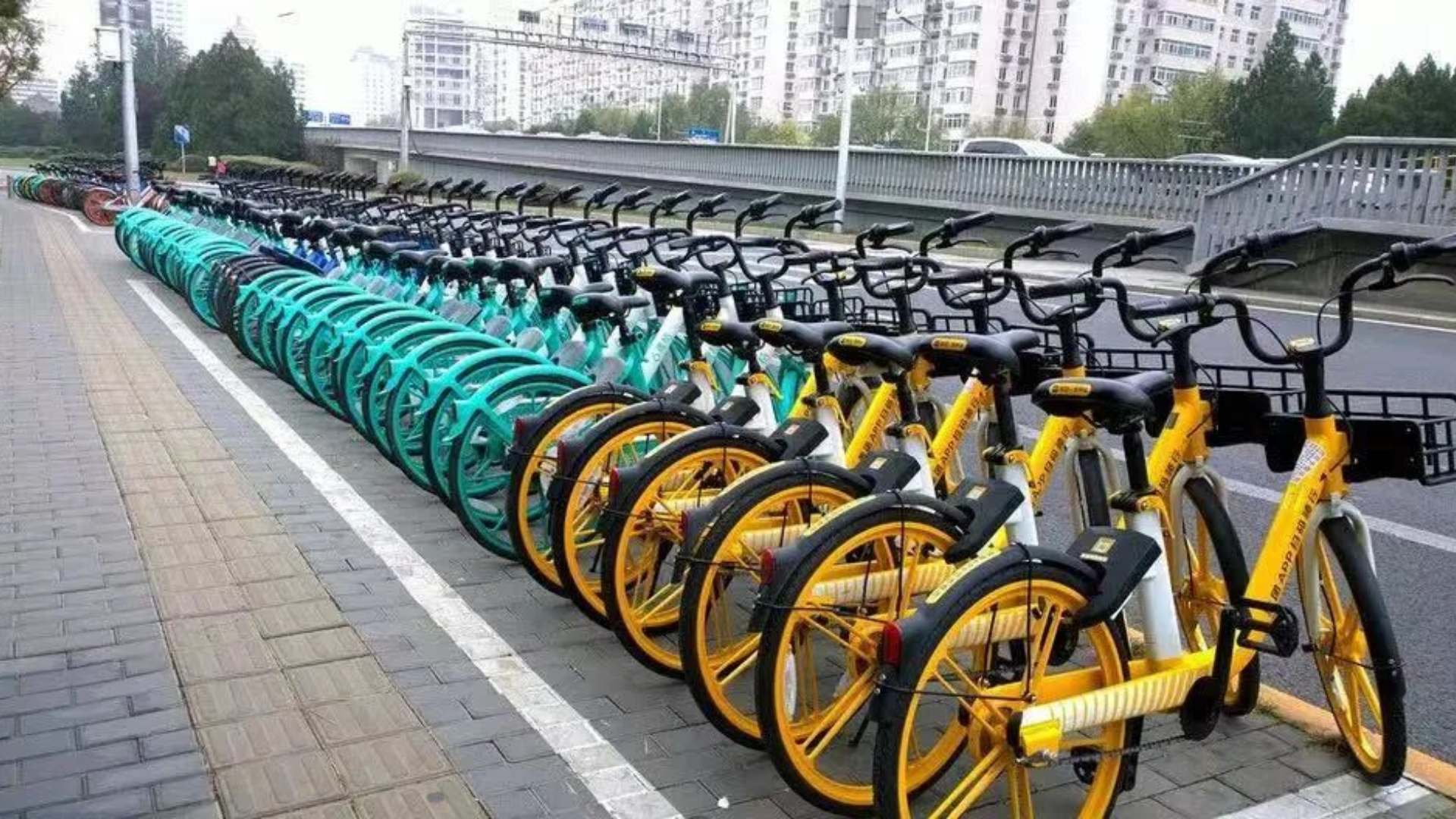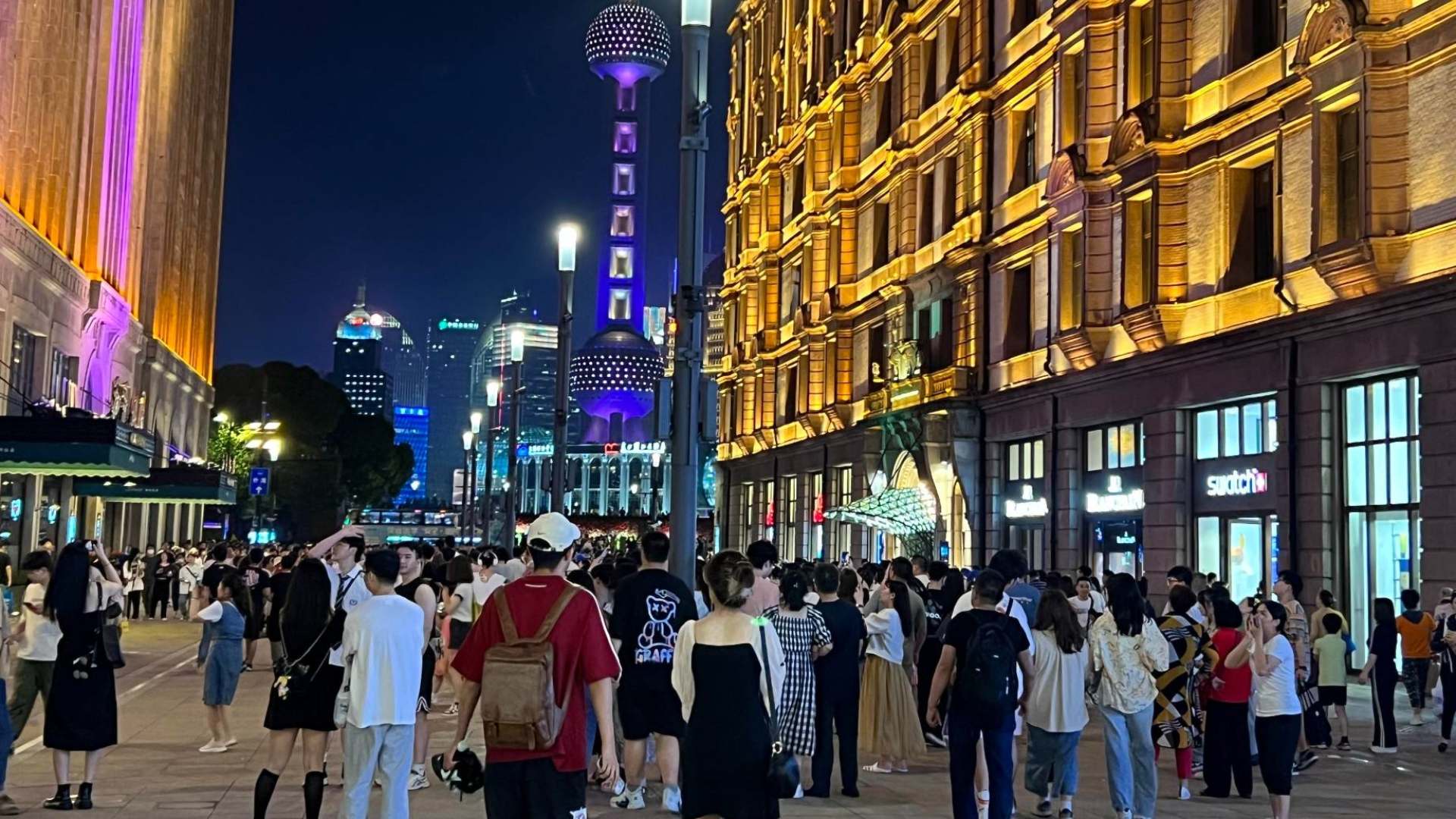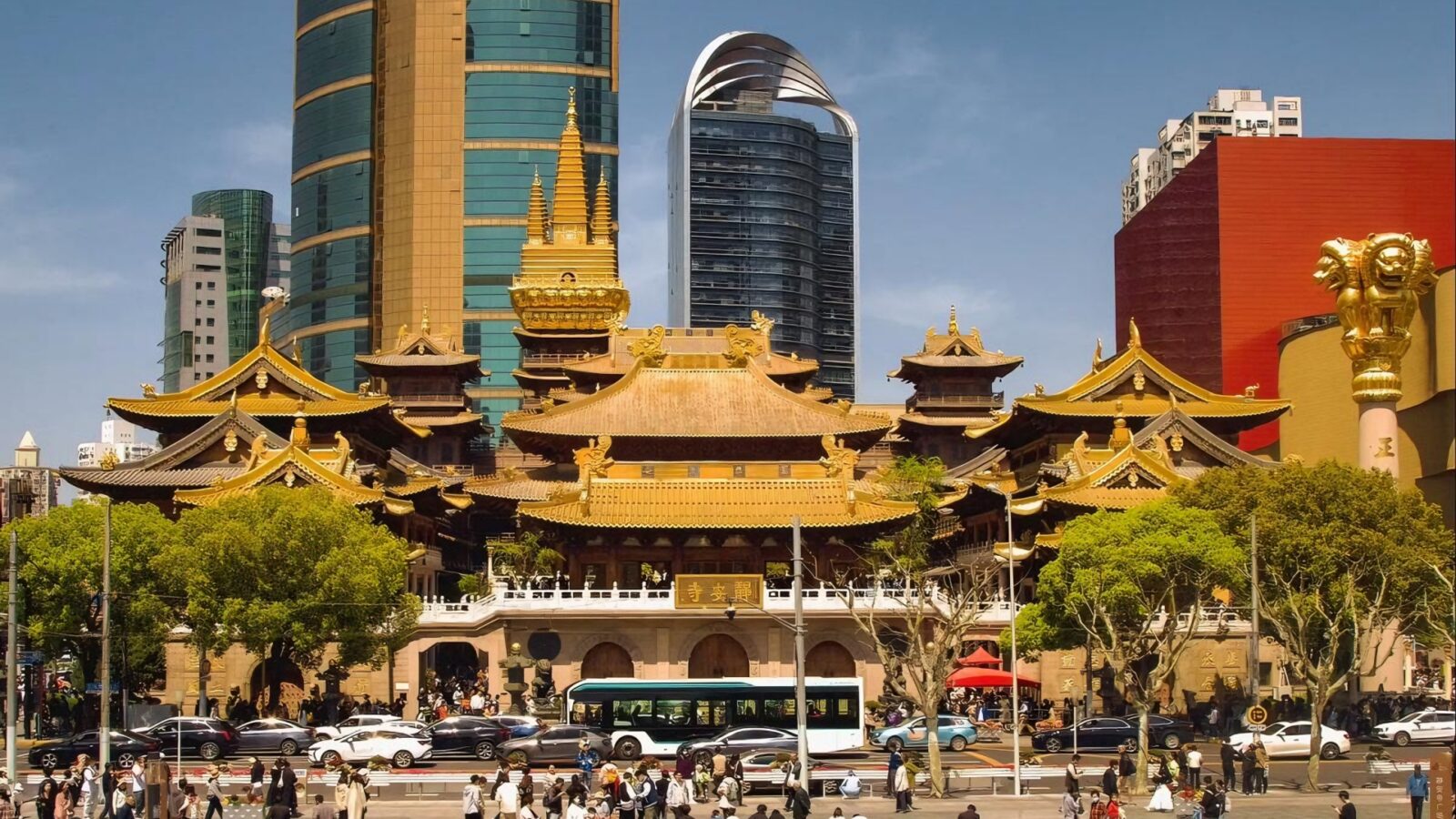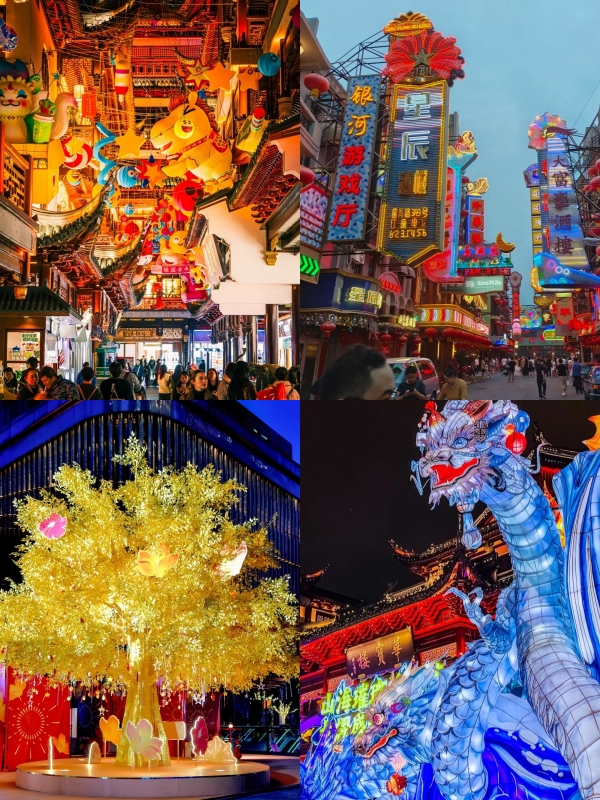Arriving in Shanghai for the first time, it is common for a foreign visitor to instinctively reach for Uber. This familiar app could be the one for you. However, it just displays a blank screen and no cars are available. That’s because Uber doesn’t do business in mainland China. Many travelers are left confused by that. They Google “uber in shanghai” and read many stories of shared experiences. Well, in actual fact Shanghai really only use DiDi Chuxing. Uber’s departure left a hole, which this local service fits like a glove. This post will take you through great alternatives to Uber in Shanghai that help you get around China. It’s a minor change to a completely different app that will save you so much heartbreak.
Uber in Shanghai: Don't Rely on It

Didi Chuxing
DiDi: Your Go-To App
The Didi Chuxing (滴滴出行) is the best known as the “Uber of China,” yet its scale has exceeded that of Uber around the globe. The app is in English, making it easy for non-Chinese travelers to understand and book rides in the city of Shanghai. In the app you’ll have your choice of Express (less expensive trips), Premier (comfort), Luxe (luxury cars), Hitch (carpooling) and even a way to hail regular taxis.
And Didi is now available everywhere in Shanghai, from big hubs like Pudong Airport and Hongqiao Airport to downtown areas like People’s Square, Jing’an and Lujiazui. In central areas, cars normally come within minutes, although waiting times can be longer in periods of heavy rain and during rush hours. For comparison, a ride from Pudong Airport to People’s Square usually runs ¥120–¥160 depending on the time of day and the car type. This wide reach is another evidence that Didi is the easiest option for tourists who are visiting Shanghai.
As for payment, Didi offers the flexibility that international visitors need. In the English version of the app, you’re able to link Visa, MasterCard and JCB cards as well (you don’t need a local bank account). Others do so in case they already use mobile payments in China and want to connect the app with Alipay or WeChat Pay. You want to enjoy more ways to pay your tolls and have peace of mind while you travel, especially during extended stays.
Using DiDi: A Step-by-Step Guide
Step 1: Download and Register
Download the Didi app from the App Store or Google Play, then change the interface to English within your settings menu. Sign up with your passport information and a mobile phone number to create an account. A Chinese SIM card helps you get around the problem of verification and allows for seamless international SMS delivery. Local data also makes sure the app functions wherever you go.
Step 2: Set Pickup Point
Open the map in your app and drop a pin at your current location, or use one of the nearby landmarks like “Terminal 2 Exit 5.” Picking a clear pickup location makes it easier for your driver to quickly locate you in congested areas. If you are at a big airport or mall, don’t just say the name and use terms like “main entrance.” The more accurate you are, the faster your car comes.
Step 3: Choose Your Ride
Tap to see the ride options available near you. Express to get to your destination quickly and hassle-free, Premier for a more comfortable ride, or Taxi for metered fares. Prices are presented up front, so there’s no guesswork and you can budget. If you have luggage, pick bigger car types for ample space. You might have to put a little work into comparing options before booking, but it could save you from unpleasant surprises closer to your trip.
Step 4: Confirm and Meet
After selecting your ride, review the booking and inspect the car’s information within the app. You’ll receive the make and model of the car, its license plate number and a photo of your driver — make sure all these details match up when your ride arrives. Didi cars are mostly white sedans in Shanghai, so make your details match carefully. If it’s crowded, stand in a visible place where the driver will not have to search for you.
Step 5: Ride and Pay
Once inside you’ll be able to share your trip with a friend through the app’s safety feature. Monitor your live GPS route to be sure you’re heading in the right direction. Paying is easy: connect Visa, MasterCard and JCB, and have some cash as backup for your taxi anytime. Rate your driver after your trip, so we can ensure quality for the next rider.
New to China and confused about using Didi as a visitor? See Didi Ride-Hailing App in China: How to Easily Use It as a Foreigner (2025)
Other Apps: Know Your Options
In addition to Didi, several other apps do business across Chinese cities.
Amap (高德打车) connects more than one platform and offers price comparisons. But the app is largely in Chinese, and thus not very user-friendly. Business rides with professional drivers Shouqi Yueche (首汽约车) But its coverage is smaller than Didi’s, and not as comprehensive. Caocao Mobility (曹操出行) is a provider of environmentally friendly electric and hybrid vehicles. There’s very little English support, and it is difficult email for foreigners. Meituan Taxi (美团打车) connects to the Meituan ecosystem, good for locals. But foreign visitors will find the Chinese-only interface an obstacle.
For English-speaking foreigners, Didi remains the most dependable. Some travelers regret taking Ubers in Shanghai instead of Didis.
Other Transport: Explore the City
Metro
The Shanghai Metro provides the system's backbone transportation. It operates from 5:30 a.m. to 11 p.m., with 19 lines and more than 400 stations. All signs and announcements are translated into both languages so the metro is tourist-friendly. Tickets cost ¥3¥15 depending on the distance, and machines take coins notes and mobile payments. That wide reach means virtually all of the key tourist sites are within a few stops.
If you’re staying a little longer, metro passes or day cards can be very handy. The cost of a 24-hour day pass with unlimited rides is ¥18, and for a three-day (72-jour) pass it’s ¥45. MetroMan and Baidu Maps are great apps with very detailed trip planning and transfer information. Trains come every 3 to 5 minutes, but at rush hour the throngs can be daunting, brushing you along like a current on the move.
Want stress-free metro rides without language worries? Discover China Metro Guide 2025: Step-by-Step Tips for First-Time Travelers
Buses
The least expensive of the Shanghai buses covers many local areas. Fares cost from ¥2 and can be paid for separately using coins, transport cards or via a mobile scan. Routes serve a variety of neighborhoods, but stops and signs are primarily in Chinese. This is daunting for out-of-towners who do not speak Mandarin, particularly in identifying which stop is the right one.
Translation apps come in handy on the bus. AutoNavi (Gaode) also gives the English-language route and follows along with your journey. Buses operate from 5 AM until 11 PM, with limited night buses. They’re slower than the metro but more of a window into what life is like, taking you through residential streets and markets.
Maglev Train
The Shanghai Maglev is a mode of transportation and an attraction for tourists. Stretching from Pudong Airport to Longyang Road station, the Maglev crosses a 30km gap in only 8 minutes with the maximum speed of 430 km/h and a single voyage for ¥50 or return tickets for ¥80. It’s a futuristic sea-faring fantasy Uber in Shanghai can never replicate.
Trains run every day between 7AM and 9:40PM, so are much better suited to most flight times. Just as comfortable is the ample seating, and the ride is surprisingly smooth considering you’re on a rocket. For a lot of visitors, the Maglev is a fun thrill ride that you can experience once and brag about back home, for example taking pictures of the digital speed display inside one of its carriages. Which brings me to why I am so happy I discovered this alternative to uber in shanghai.
Shared Bikes
Bikes are available on nearly every Shanghai sidewalk for rent to share. Meituan Bike and Alipay’s HelloBike allow you to unlock rides using a QR code. Users are charged ¥1 per 30 minutes, which is automatically deducted through the app. Bikes are stationed near subway stops, busy streets and tourist areas, providing a convenient alternative for short trips.
Biking along tree-lined streets in the French Concession is a relaxing alternative to packed subways. Along the way, you pass cafés, vendors and small shops. But perhaps best short rides, not long ones. And don’t forget to park them in designated areas so you aren’t slapped with fines or find your account blocked.
Walking
Walking is the easiest, most enjoyable and immediately rewarding method of exploring Shanghai. On the Bund, the breeze from a river is infused with the glow of neon city lights. Rarely do the sycamore trees in the French Concession shade historic villas and boutique cafés. The distances between the major sites are not that far apart, and you can easily walk short routes.
Foreign visitors are advised to wear comfortable shoes as the sidewalks can be somewhat patchy in its older areas. Apps such as Google Maps or Baidu Maps are useful for getting your bearings. Walking is free, yet it has delivered rich memories that even a taxi or Uber ride around Shanghai cannot.
Quick Comparison Table
| Transport Mode | Operating Hours | Cost Range | Coverage | Recommended Apps |
|---|---|---|---|---|
| Metro | 5:30 AM – 11:00 PM | ¥3–¥15 per ride | 19 lines, covers most attractions | MetroMan, Baidu Maps |
| Buses | 5:00 AM – 11:00 PM | ¥2 per ride | Wide city coverage, mostly local | AutoNavi , Baidu |
| Maglev Train | 7:00 AM – 9:40 PM | ¥50–¥80 one way | Pudong Airport ↔ Longyang Road | Official Maglev Timetable |
| Shared Bikes | 24 hours | ¥1 / 30 minutes | Available citywide, near metro | Meituan, Alipay (HelloBike) |
| Walking | Anytime | Free | Bund, French Concession, downtown | Google Maps, Baidu Maps |
With this mix of options, you can always find the right balance between speed, cost, and experience when exploring Shanghai.
Ride Choices: Compare and Decide
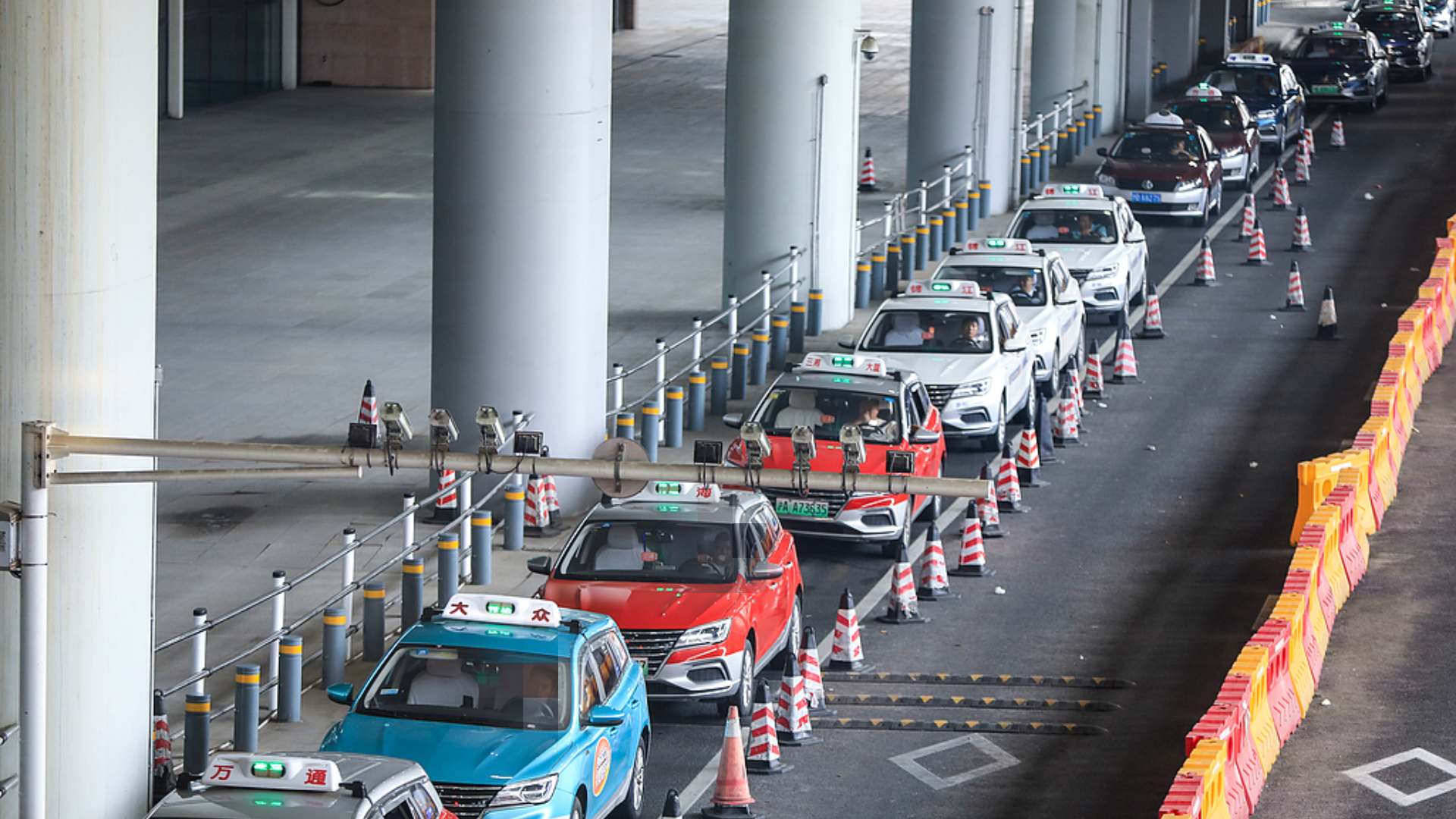
Taxis
Taxis: Hail a Traditional Ride
Yet Shanghai taxis also are ubiquitous; the Dazhong fleet is a trusted one. Base rate is ¥14, with an additional charge according to the mileage. Although it’s a viable option, the biggest downside to this is language — most drivers don't speak English. This may cause communication problems, particularly when providing instructions. What’s more, it can be next to impossible to find and catch a taxi on a rainy night because they are sought after and not as visible on the street.
DiDi: Book a Modern Ride
DiDi, often referred to as the “Uber of China,” is most palatable for foreigners. The app is similar to Uber in that it operates on an upfront fare model; you can see the amount you’re set to pay before you confirm a nebulous cash-based ride, pre-empting nasty surprises or unexpected hour-long detours. The app does have English support which allows riders to easily book a ride, despite of the language. With GPS tracking and driver ratings, DiDi provides a more transparent and secure option that many users prefer, particularly when the roads are packed. Its anything and everything you'd want in an uber shanghai alternative.
Black Cars: Avoid at All Costs
Unlicensed, black cars must be avoided at all costs. They typically hang out at airports or malls, soliciting a flat fee for the ride. These prices are not standardized, but frequently far exceed what is reasonable through agonizing haggling. More importantly, black cars have no GPS or official customer support. With no legal record of the ride, there’s nothing you can do if things go south. Unless you are fluent in Chinese and know the local rates, it’s better to rely on a regulated service, such as a taxi or DiDi.
Comparison Table
| Option | Base Cost / Fare Example | Language Ease | Safety & Support | Availability |
| Shanghai Taxis | ¥14 base fare + ¥2.4–¥3 per km | Low (most drivers don’t speak English) | Medium (regulated, but no GPS tracking) | High, but hard to hail in rain or peak times |
| DiDi | ¥120–¥160 (Pudong to downtown) | High (English app support) | High (GPS, ratings, SOS button) | Very high, reliable across city |
| Black Cars | Negotiated flat rates, often inflated | Medium if you speak Chinese, otherwise very low | Low (no GPS, unlicensed, no recourse) | Unofficial, found at airports and malls |
Travel Tips: Master Your Trip
Airports and Peak Times
At Pudong (PVG) or Hongqiao Airport, follow signs to official taxi queues for safety. If using Didi, choose a clear pickup like “Terminal 2 Exit 5” so drivers can find you. During major holidays like Chinese New Year, waits may triple, so booking earlier or taking the Maglev is smarter. On rainy evenings, Didi Premier often gives quicker matches.
Late-Night Travel Safety
Both taxis and Didi are safe late at night, but sharing your trip with a friend adds security. Didi has an SOS button and GPS tracking. Always confirm the license plate before getting in, especially in busy areas like Nanjing Road. Carrying your hotel’s address in Chinese helps if communication fails.
Handling Language Barriers
Language can be tricky, but Didi’s English quick-replies like “I am nearby” reduce confusion. Save your destination in Chinese characters to show drivers if needed. Apps like Google Translate or Pleco are helpful in less touristy neighborhoods. These tools make rides less stressful when Mandarin is difficult.
Hotel Assistance for Foreigners
Licensed hotels often help foreign guests book rides. Front desks can call taxis or order Didi if your app or payment fails. High-end hotels such as Hyatt on the Bund and Park Hyatt Pudong confirm this service. Choosing such hotels ensures both compliance and easier transport arrangements.
FAQs: Your Questions Answered about Uber in Shanghai
Q: Is Uber still working in Shanghai?
Uber stopped in China after merging with Didi in 2016. The app won’t connect if opened in Shanghai. Many first-time travelers get surprised, expecting Uber’s worldwide coverage to work here. In China, Didi Chuxing replaced Uber as the main option. Locals use it daily, and it feels part of the city’s rhythm. Download Didi before your trip and set the app to English.
Q: Can foreigners use Didi without a Chinese phone number?
You usually need a local SIM to register because Didi sends codes by SMS. Some travelers succeed with international numbers, but it’s inconsistent. A safer option is buying a prepaid SIM after arrival at airports or telecom stores. Costs are around ¥100–¥150 and usually include data. Having a local number also helps with customer service and app notifications.
Q: How much does a Didi ride cost from Pudong Airport to downtown?
Fares vary with time, traffic, and car type. Most travelers pay between ¥120–¥160 during normal conditions. At night or heavy rain, fares can rise near ¥200. Didi shows the fare upfront, so there are no big surprises. Taxis can be cheaper, but they don’t always match the comfort. Trust the app price more than third-party estimates for accuracy.
Q: Does Didi accept foreign credit cards?
Yes, the English version allows Visa, MasterCard, and JCB cards. Many travelers succeed, but some cards don’t always process. Sometimes payments fail without clear explanation, causing frustration. Always carry a backup option like cash or another wallet. If a card works once, it usually continues working well. Still, occasional glitches mean you should prepare alternative payment methods.
Q: Are taxis cheaper than Didi in Shanghai?
Taxi fares are similar to Didi for short city trips. Taxi base fare starts at ¥14, plus ¥2.4–¥3 per km. Many foreigners prefer Didi because it shows upfront pricing clearly. With taxis, communication issues may lead to longer routes. Didi gives driver ratings and details, building more trust for travelers. The difference in cost is small, but convenience often matters more.
Q: What about safety late at night?
Didi offers GPS tracking, SOS button, and live trip sharing. These features reassure travelers moving around late at night. Shanghai taxis are generally safe, though communication barriers can cause stress. Always check the license plate before getting into any car. Both taxis and Didi are safe, but Didi feels more controlled. Most visitors feel secure traveling through Shanghai even after midnight.
Q: Do Shanghai taxis accept cash?
Yes, taxis still accept cash across Shanghai. However, drivers prefer mobile payments through Alipay or WeChat Pay. Carry small notes like ¥20 or ¥50 for easier payments. Using ¥100 bills may create issues with change. Longer rides usually allow correct change from drivers. Cash remains reliable if mobile payments don’t work for you.
Q: Can I use Uber Eats in Shanghai?
Uber Eats doesn’t operate in China at all. Locals rely on Meituan and Ele.me for food delivery daily. Both platforms cover countless restaurants, cafés, and convenience stores. Delivery fees are cheap, often less than ¥10 per order. Food usually arrives within 30 minutes across most districts. Apps are only in Chinese, so translation tools help a lot.
Q: How long is the wait for a Didi during rush hour?
In central districts, rides arrive within 5–10 minutes normally. During peak hours or rain, waits stretch to 20 minutes. Travelers often recommend booking rides slightly earlier. Suburban areas may take longer because of fewer available cars. At airports, rides can delay during peak flight arrivals. Always add buffer time if heading to trains or flights.
Q: Is there an English hotline if I get stuck?
Didi has in-app chat support in English for travelers. Response times vary—sometimes fast, sometimes frustratingly slow. Many international hotels also assist by booking rides directly. Hotel front desks often call cars for foreign guests. This option helps if your app crashes or won’t connect. Asking staff for help is common and very effective.
